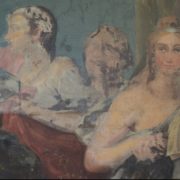The Power – and Danger – of Attributions.
Ruth Osborne
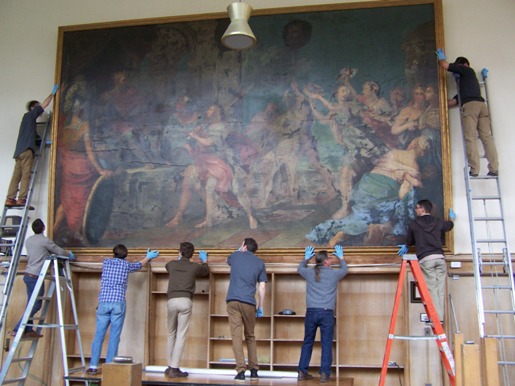
Triumph of David removed for conservation treatment. Courtesy: Villanova University.
In the fall of 2013, a badly-damaged 17th century painting attributed to Pietro da Cortona (known for his frescoed ceiling at the Palazzo Barberini in Rome), was exhumed from the microfiche storage room of Villanova’s library. The work, entitled Triumph of David, has been undergoing a two-year $100,000 conservation effort ever since.
On Villanova’s website, the September 2013 press release about the treatment campaign says the painting is “by 17th century Italian artist Pietro da Cortona,” while a December 2014 report in The Washington Times praising the effort states twice that the painting is only attributed to the Baroque master.
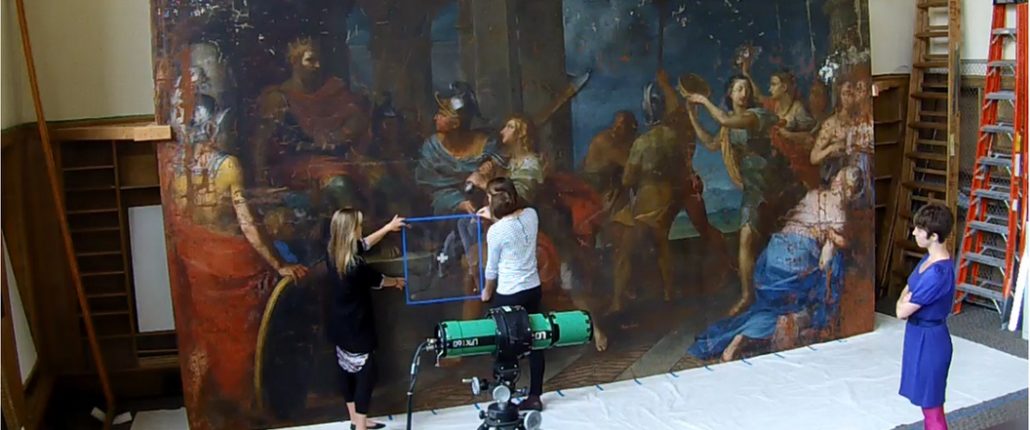
Conservators setting up canvas for x-rays. Courtesy: Villanova University.
In media coverage of art conservation, scientific methods are often promoted as a way to return the canvas to an “original,” more “authentic” state. In this view, conservation is a truth-finding mission that serves to uncover enlightening facts for public benefit. As such, works can be subjected to treatment in the lab solely for this purpose – for the promise of discoveries beneath the surface (such as with the man found beneath the Picasso at the Philips Collection last summer). The danger of this emphasis on truth-finding is that finding the more “authentic” state of a work does not necessarily protect its physical well-being. It is also misleading, as works can exist in multiple states throughout their history, and thus it is up to the present conservator to judge which is the best state to which the work must be returned. But can it even be truly returned, as if history had never happened? The work will still be altered by the conservator with whatever solvents or lasers that change the chemical structure of the work to remove varnish, dirt, and bad in-painting that retrieve the preferred aesthetic condition. These and other issues are discussed by conservator Dr. Salvador Muñoz-Viñas in his Contemporary Theory of Conservation (2005).
A Villanova blog following the restoration project of the Triumph of David continues to assert Cortona’s authorship, while the above mentioned press release emphasizes the uniqueness of the large work in Cortona’s proven oeuvre:
“Only a handful of collections in the world contain works on canvas by this artist, and for an American collection to possess a painting of this magnitude attributed to Pietro da Cortona is even more uncommon.”
A comment from Villanova’s Vice President for Academic Affairs proudly proclaims the wider benefits of this treatment for art historical scholarship:
“Not only will the restoration be a workshop on the techniques of conservation for the artistic community, it will also be a classroom for students and faculty alike to discover the riches of this artist and the methods of bringing back to life a great masterpiece.”
Being able to attach a legitimate name like Cortona’s to the canvas would indeed make it a work of large renown within the artist’s surviving oeuvre. When interviewed, the head conservator and chemist involved in the treatment only refer to “the artist,” not Cortona himself. Attributed works, it seems, can turn into confirmed works at the hands of an eager press, almost like a game of art historical telephone.
Philadelphia Inquirer reporter Kathy Boccella writes that Philadelphia Museum of Art curator Carl Strehlke was rather uncertain of the painting’s authorship, while head conservator Kristin DeGhetaldi related that Cortona’s “vibrant blues, lovely colors, beautiful skies” do not appear on the canvas. Further uncertainties about the work include: its history/provenance before the donor acquired it in the 1930s upon moving to Castle Nemi near Rome, and precisely how it was transported to the United States after having suffered damages during WWII.
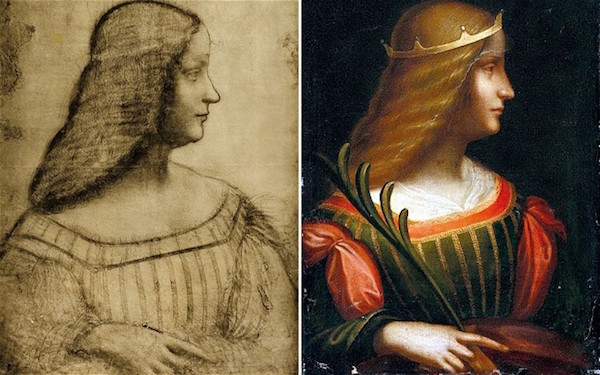
Leonardo’s drawing of d’Este (left) with attributed painting (right). Courtesy: The Telegraph.
If anything is to be made of note here, it is that there is great power that can be wielded by assertive attributions.
When newly-discovered works are attributed to well-known artists, as in the case of the Triumph of David, public relations crazes can heat up and make assumptions not backed by solid scholarly research or historic documentation. Thus, works can easily slip into an artist’s oeuvre without much question of its validity in the public mind. Case in point: Leonardo scholar Carlo Pedretti’s denied attribution of the uncovered portrait of Isabella d’Este in a Swiss bank vault. Or, an attribution that is just beginning to be questioned, that of the Fitzwilliam Museum’s pair of bronzes to Michelangelo. When an attribution is, all too often, simply taken as fact and not questioned by the media, the story runs away from the scholar actually doing the work. And then, when anything new comes to light to reverse an attribution, the fanfare of the exhibition or publication that happened decades ago has easily been forgotten, but what is done to right the artist’s oeuvre in public memory?
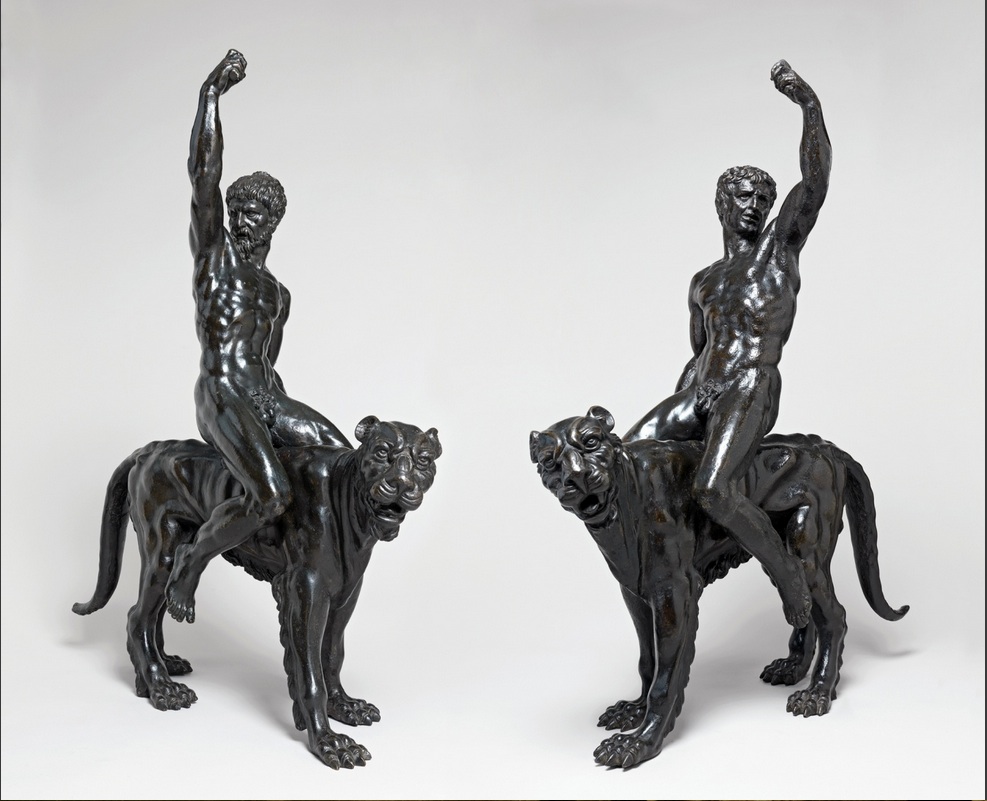
Pair of bronzes at the Fitzwilliam. Courtesy: Michel Jones/The Fitzwilliam Museum.

